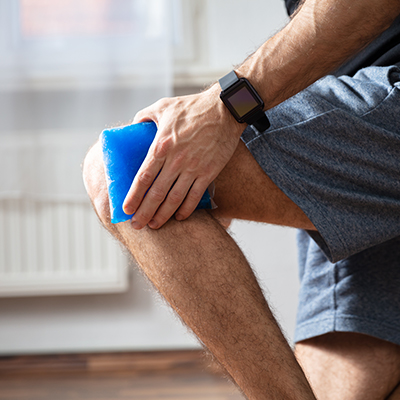LET US INTRODUCE YOU TO THE R.I.C.E WAY OF HEALING

Today, on World Osteoporosis Day we intend to raise awareness about the prevention, diagnosis and treatment of osteoporosis. Here’s everything you need to know about it:
What is Osteoporosis?
Osteoporosis is a medical condition in which your bones become weak and brittle. Small honeycomb like spaces inside a healthy bone increase in size, causing the bone to lose density and strength.
Osteoporosis can occur in people of any age group, but it is common in people between 41-60 years and highly common in the ages of 60+ years, especially women.
The biggest causes of osteoporosis is age, being a female, menopause, poor nutrition, smoking, inactivity, low body weight, family history of osteoporosis as well as certain other diseases. It occurs mostly in the bones of hips, wrists, spine and ribs. People with this medical condition are prone to fractures with simplest of activities like walking or standing.
While not all causes of osteoporosis are under our control, some are. These include adequate nutrition, daily dose of Vitamin D & calcium, weight-bearing exercises and no smoking.
Usually, in the early stages of this disease, there are no warning signs and hence, it cannot be detected until a fractire occurs. But some not so common symptoms of osteoporosis include weak grip strength, brittle nails and receding gums. The bone density test is used to diagnose osteoporosis.
Once detected, you should immediately visit a doctor and work on the treatment plan. Medications, therapies and exercises help strengthen your bones and help protect them. Certain lifestyle changes are also inevitable.
Muscle and bone injuries can be painful. No matter how you hurt yourself, the time that all injuries need to heal is almost the same and so are the care techniques. For minor injuries, you can always follow the ‘R.I.C.E’ concept apart from proper consultation.
What is R.I.C.E? It stands for Rest, Ice, Compression & Elevation – an acronym used by many trainers and sportsmen. Know that this technique is used to aid treatments for bone and muscle injuries. You shouldn’t use it to treat open wounds.
Rest- Rest is always the best way to heal any physical ache. Moving around can only worsen the pain. The first step of every healing process is to rest.
Ice- Applying ice on the injury has the greatest effect when done on the first two days. Ice also reduces swelling over the injured area by decreasing the blood flow there. Make sure that you never place ice or ice packs over the skin directly to avoid frost bites and take breaks after every 15-20 minutes.
Compression- You can apply compression, over the injured area, by wrapping a bandage firmly over it. This reduces further swelling and keeps the area immobilised to avoid any further damage. Do not wrap the bandage too tightly or it may cause discomfort and interfere with the blood flow.
Elevation- No matter where the injury is, it always helps to lift the injured area above chest level or close to it. The process helps drain the fluids from that area and minimises swelling.
It is advisable to not apply heat over the injury for the first 3 days. After 3-7 days you see definitive changes, like reduced swelling, less pain and colour changes in your bruises. When this happens, you can apply heat and ice packs alternatively to increase the blood circulation and decrease the pain. If the pain and inflammation is more, do visit a physician at the right time!





Leave a Reply